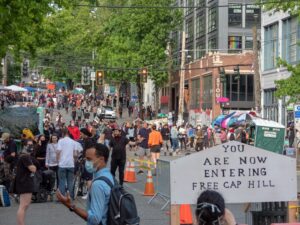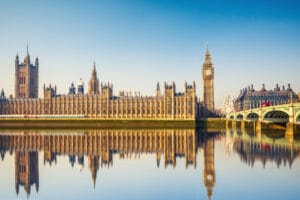It started with George Floyd, but this wasn’t the beginning. Anti-police brutality protests turned to anti-racism protests and have since begun to develop a narrative surrounding how some nations deal with their colonial past. A subject not everyone feels comfortable discussing. The recent protests and statue toppling have also presented the opportunity to open up a dialogue between communities, and how to broach the decolonisation of society. This article will look at the context behind why some statues are controversial as well as some solutions as to how to approach the question surrounding what we should do with our colonial statues.
The majority of persons of UK heritage have benefitted from our colonial past, a past which is seemingly revered by the community through the erection of statues. Great benefactors of society such as Edward Colston and Thomas Guy are immortalised in bronze and stone to remind us of how we have inherited great benefits from their benevolent use of wealth. From founding hospitals and schools to providing endowments to educational establishments you will find not only many a colonial statue but also their names celebrated on buildings and street names. Whilst some, largely white Britons, inherited the benefits of those immortalised in statues, others, more specifically the Black, Asian and Minority Ethnic (BAME) communities, inherited trauma, oppression and systemic racism from the acts in which these colonial figures amassed their wealth allowing for benevolent distribution across the British populace. Between 1672 and 1689 Edward Colston is estimated to have transported 80,000 men, women and children from Africa to the Americas as a member of the Royal African Company, all of whom were branded with the letters RAC to denote the companies ‘ownership’. It is estimated that between 10 and 20% of slaves who made the journey perished due to disease, suicide and murder.1 Similarly, Robert Clayton also had ties to the Royal African Company.2 Probably the most controversial figure who has once again found himself in the spotlight is Cecil Rhodes, an imperialist who has been subject to calls for removal many times over the years and even has its own campaign ‘Rhodes Must Fall’.3 A notable alumnus of Oriel College an Oxford University, Cecil Rhodes was a generous benefactor of the college, whilst also funding scholarships, and has since been commemorated with a statue of himself on the building. However, he is perhaps better known as being the architect of the South African apartheid and has been widely documented as believing white rule to be the ‘natural order’.4 5 The decision to keep the statue has long been scrutinised and only exemplifies the lack of BAME students at the prestigious university, with 59.3% of BAME students in 2016 reporting feeling unwelcome at Oxford. In the latest campaign to remove Cecil Rhodes from Oriel College, a petition calling for its removal looks to surpass 175,000 signatures.6 7 Whilst Cecil Rhodes may be an example of an extreme, a new site called topple the racists.org has taken it upon themselves to document statues of historical figures across the UK who have less than unsavoury pasts.8 Although ‘most prominent Britain’s living during the age of legal slavery were likely profiting from it in some way’ as pointed out by Claudine van Hensbergen, Associate Professor at Northumbria University, it seems perverse to continue displaying these historical figures without adjustment or context when they no longer accurately reflect either the values or the diversity of UK society today.9 This realisation, motivated by the wider Black Lives Matter protests, has led Labour-held councils across England and Wales to review certain statues, monuments, and street signs on public land and property.10
Opinions of how to deal with these controversial statues are wide and strongly contested with the three main camps being conservatism (who want the statues left), antagonistic (who want the most offensive signs and statues removed), and agonism (who call for statues to be modified to better reflect contemporary times).11 The first of these, conservatism, argues that to remove Britain’s colonial statues is to remove its heritage and to erase history. This, members of the camp say, is dangerous as it could lead us to forget the mistakes me have made in the past, causing us to repeat them.12 Prime Minister Boris Johnson appears to subscribe to this viewpoint having stated that to remove the statues is ‘to lie about our history’.13 The opinions espoused by conservatism are easily scrutinised with it being pointed out by Christienna Fryar, a lecturer in Black British history at Goldsmiths, that statues are not effectively playing their role in teaching others about history, with many tending to ‘simply ignore them’.14 Further to this, it could be argued that conversation and knowledge surrounding Edward Colston has become much greater since his toppling than before, contradicting the idea that statues teach us about our history. More nefariously is the criticism that monuments which are not dealt with adequately retain their power to ‘normalise the dominance of one group of people over another’.15 It is apparent that this is not truly a solution.
On the other end of the spectrum, we have antagonism, which calls for the removal of statues. Whilst it is uncertain what the long-term plan is, this has been the temporary solution for several councils who have removed colonial statues since the campaigns began.16 Those who claim this camp have argued that many of the cities in which these statues are based are themselves monuments to colonialism having been built through the resources taken from colonies. The removal of statues would not erase history or ‘diminish cultural heritage’ as the cities they are located in are themselves testament to a colonial past.17 Speaking in response to the antagonistic actions that saw the toppling of Edward Colston in Bristol, Nigel Biggar, a Theology Professor at Oxford, highlighted three reasons for why this is questionable.18 Firstly, he has argued that toppling statues lacks democratic legitimacy. Whilst this may be true of some statues, arguably it cannot be applied to the toppling of Edward Colston who has been subject to numerous petitions in Bristol over the years.19 Secondly, Biggar has said that many campaigns for the toppling of statues are historically false, pointing to a 2015-16 campaign against Cecil Rhodes that displayed him as the South African Hitler – something which could be seen to be slanderous. Lastly, Biggar claims that pulling down statues does not address the real injustices and redress the unfair disadvantages that some black Britons suffer from. The toppling of statues is a distraction which adds no real substance to any dialogue around the statues. Whilst the antagonistic toppling of colonial statues will be appealing to many, especially those whose history it deals with, realistically it is not a solution.
Straddling the line between conservatism and agonism is the solution to relocate statues to museums or sculpture gardens. This method of dealing with history has been popular in former Soviet countries who have had to contend with the Soviet legacy left behind.20 Similarly, in New York City the memorial of Dr J Marion Sims, a 19th-century doctor who performed experimental surgeries on enslaved black women, was relocated to a cemetery in Brooklyn where he is buried.21 Whilst this method deals with the disproportionate status and power afforded to colonial statues through their repositioning from areas of focus to more understated settings, the method does not adequately deal with the statues, only choosing to cover up the controversial issues rather than approaching the issues.
Agonism presents a further potential solution to the issues of what to do with the statues and calls for their modification to better deal with the issues surrounding them. This method can take many forms and can simply be the addition of a plaque giving context to the statue. This was the approach Edinburgh took with the city recently adding a plaque to former Home Secretary Henry Dunba’s statue which reads ‘he was instrumental in deferring the abolition of the Atlantic slave trade. Slave trading by British ships was not abolished until 1807. As a result of this delay, more than half a million enslaved Africans crossed the Atlantic’.22 The plaque is also ‘dedicated to the memory of the more than half a million Africans whose enslavement was a consequence of Henry Dundas’s actions’. Geoff Palmer, Scotland’s first black professor and one of the key people involved in the wording of the plaque has spoken against the tearing down of statues, stating that ‘if you remove the evidence, you remove the dead’.23 Whilst the installation of a plaque is indeed a well-thought solution to the issue of statues the wording of plaques can often times get embroiled in politics as to what the wording should be, as was the case with Edward Colston whose proposed plaque was accepted in 2018 and has since had its wording agonised over.24 There is also the argument that a simple plaque doesn’t do enough to bring attention to the controversies surrounding the statues. Ways in which to do this would be to add to the statue in order to change or extend its meaning. An example of this has been the ‘fearless girl’ statue which was placed in front of the charging bull on Wall Street in New York, which, while open to interpretation, has been seen by many to be a political commentary on the lack of women in leadership roles on Wall Street.25 The Bristol street artist Banksy has seemingly drawn inspiration from this idea and has proposed that the Colston statue should be put back on its plinth with the addition of life-sized bronze statues of the protestors in the act of pulling it down to commemorate 7th June 2020.26 A final, alternative idea, in the spirit of agonism put forward by Belgium Historian, Omar Ba, would be to commission a counter-statue which has ‘equivalent presence and power, to really ignite a conversation, and to show opposition’.27 This idea could be especially powerful due to the disproportionate number of statues displaying figures from BAME communities in the UK. This lack of BAME statues was revealed in BBC research who found that since 2007 only 21 of the 175 commissioned statues were of people from BAME backgrounds, and of the 11 who were black, only six were black British.28 With this in mind, the installation of a counter statue by a BAME artist could make for a very powerful statement.
Reviewing each different solution it would appear that some form of agonism would be the best answer to the current question we have around what to do with our colonial heritage and is the solution most likely to please both those who want to keep the statues and those who want to topple them. With many people being fiercely remain or fiercely remove, the ability of an agonistic approach to generate dialogue between different people and communities, as well as the ability to softly change the narrative around our past, could be the first step that is needed for us to take a look at and come to terms with our colonial legacy. It should also be noted that before any decision is made on what is to be done with each statue a conversation must be had with all local stakeholders, including the BAME community. One thing is clear though, the refusal to deal with and acknowledge our colonial past will inadvertently place a glass ceiling over Britain’s capacity to progress as a society.


